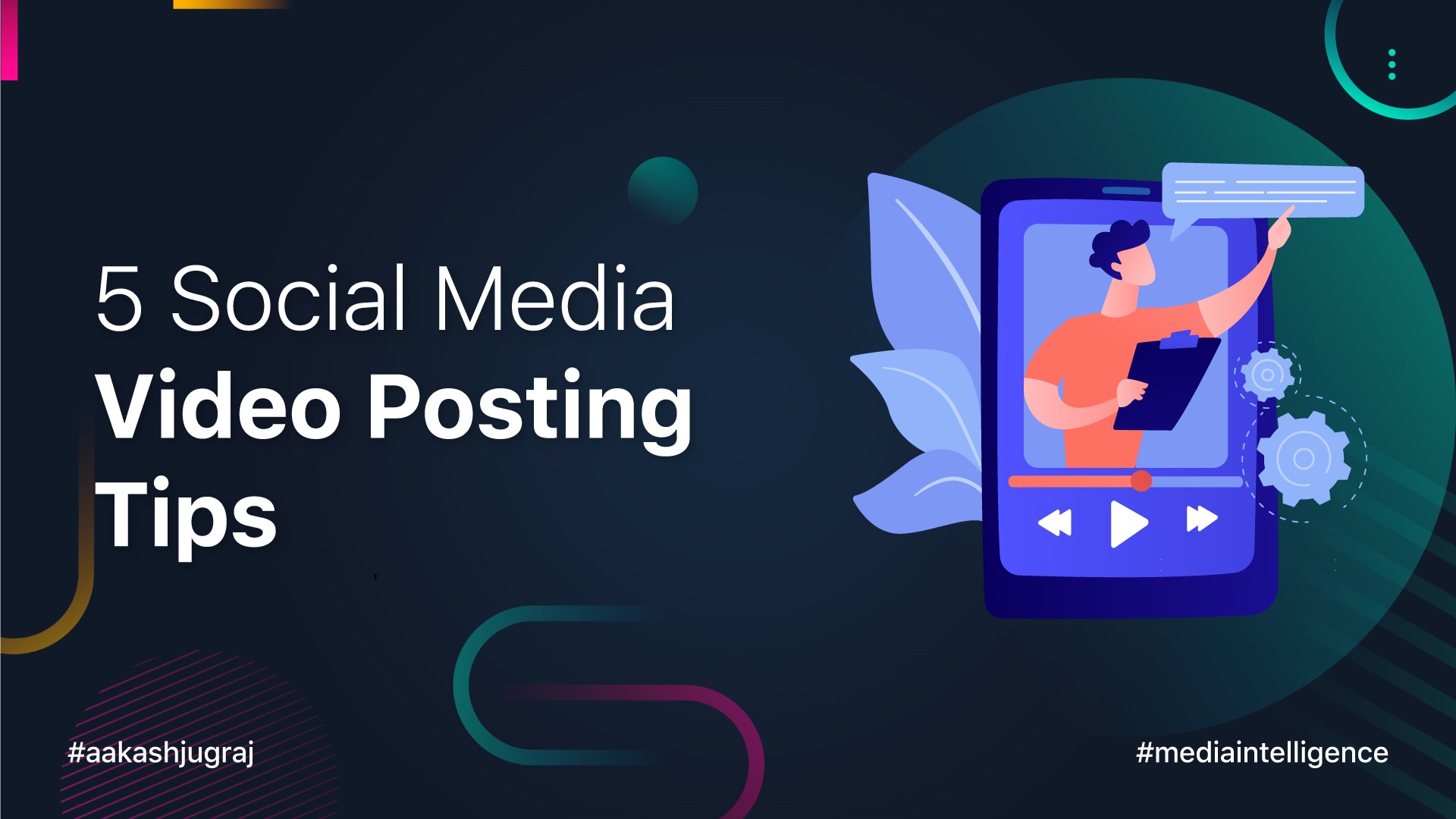5 Social Media Video Posting Tips
admin
October 22, 2021

Media Intelligence: 5 Social Media Video Posting Tips
Video content marketing and advertising have fast become a standard for social media managers, and it’s clear to see why: video generates more interaction than any other type of content on social media platforms like Twitter, Linked In, Facebook, and Instagram.
Video-focused social media platforms like YouTube and TikTok are growing. YouTube has more than 2 billion monthly active users around the world, while TikTok has 800 million. With the odds stacked in their favour, an increasing number of social media marketers are eyeing video as the next frontier.
We’ll show you how to leverage social media video marketing for your business in this article:
Social Media Video Posting Suggestions
Maintain brevity and succinctness in your content.
It’s tempting to turn your favourite topic into an epic, feature-length video discourse. However, in recent years, the average attention span has decreased substantially. You won’t be able to hold the attention of most social media users for more than a few minutes unless your material is appealing and to the point.
Furthermore, the initial few seconds of your video must be memorable! Your time is limited, and you only have five seconds to engage your audience before they click away. That’s why video intros are so crucial since they show what’s coming next.
You’ve already lost most of your viewers if you don’t display something fascinating in the first few moments. To guarantee that the proper viewers remain around, incorporate the top draw for potential buyers early on or identify the primary goal of the video in your video beginning.
Make your video search-engine friendly.
It would help if you didn’t scrimp on the accompanying description text – this is a fantastic opportunity to pique the interest of a wider audience. This is especially critical if your video’s main argument isn’t immediately obvious.
Additionally, continuously optimize your video for search by including essential keywords in the title, description, and, if applicable, video tags. When feasible, include captions and transcripts with your images.
It’s also vital to pay attention to your thumbnail; make sure it’s appealing and well-designed, as this can influence whether or not your audience clicks on it. Also, be aware of any text restrictions for thumbnails on your preferred social media platform. Facebook, for example, limits thumbnail text to 20% of the total size, including logos and user interface.
Take the ‘no-sound experience as an example.
Because cell phone usage is so common in public places, many users have their sound turned down by default. It’s crucial to consider the ‘no-sound experience while editing your video for social media.
Consider the following questions:
- Is your video still comprehensible if it isn’t accompanied by audio?
- Is it able to pique interest without the use of relevant audio cues?
- Is there a way to convey the same information without using audio?
- Is it possible to use subtitles or other on-screen visual cues?
If at all possible, upload natively.
As the battle for social video content dominance heats up, it’s becoming more critical than ever to publish your video natively wherever possible. This means that instead of submitting your movies to one social media platform and spreading them across all of your social media channels, you should upload them directly to each of them.
You might have noticed that when you share a link to a YouTube video on Facebook, it no longer appears in the wider inline video view that it used to. Links to YouTube from Twitter are the same way.
Individual social networks are less likely to sponsor and surface video content stored on a competing platform as they compete for a larger share of the video industry. This can be inconvenient because it requires additional effort, but by publishing a video to each site separately, you enhance the odds of your material being seen, seen, and shared by the platform’s users.
Include a clear call-to-action in your message (CTA)
It’s vital to remember that while creating content is enjoyable, every piece of content should contribute to your organization’s objectives. It’s critical to comprehend the following before writing any content:
What is the benefit of this content to the viewer?
As a result, what action do I want the viewer to take?
As an individual, business, or organization, what do I hope to gain from this?
It should be rather simple to develop a clear CTA from there. Do you want to increase your subscriber count? At the end of each video, urge viewers to subscribe by clicking the subscribe button.
Want to hear from your audience on topics they’d like you to cover in future videos? Request that they leave a remark! Simply requesting what you want can go a long way toward encouraging more social engagement and growth.
read more:3 Steps to Design New Brand Identity for Business
Recent Posts
-
Media Intelligence: What is persona mapping, and why is it essential for your brand?03 Nov 2021
-
Media Intelligence: Digital Transformation Crucial For Customer Experience03 Nov 2021
-
Media Intelligence: How to Begin a Social Listening?03 Nov 2021
-
Media Intelligence: Why Brand Ambassadors Are Important?03 Nov 2021
Categories
Have Any Question?
- (+62)81 652 4689
- [email protected]


